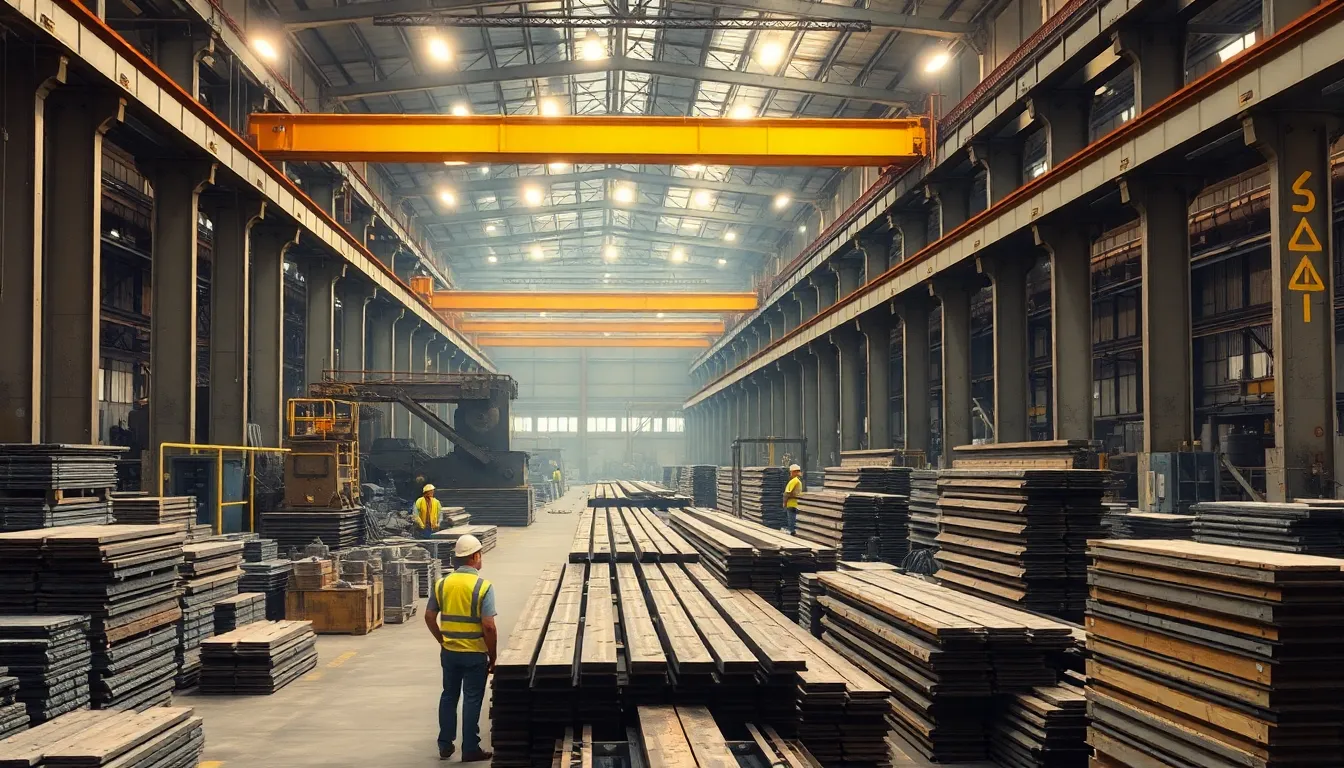Table of Contents
ToggleWhen it comes to steel, it’s not just about strength and durability; it’s also about price. Ever wondered how much steel costs per pound? It’s like asking how much a cup of coffee costs—depends on where you go! From construction sites to DIY projects, knowing the current steel price can make or break a budget.
Overview Of Steel Pricing
Steel pricing fluctuates based on several key factors. Supply and demand significantly impact costs; when demand rises, prices often increase. Conversely, when supply exceeds demand, prices may decrease. Global market conditions and trade policies also play crucial roles. Tariffs on imported steel may elevate costs for consumers.
Regional variations affect pricing as well. Local availability influences how much steel costs per pound in different areas. For instance, urban locations might experience higher prices than rural ones due to transportation expenses. Quality of steel, classified into categories like carbon, stainless, and alloy, also determines price differences. Each category suits various applications, influencing demand and cost.
Current steel market prices tend to hover around $0.50 to $1.50 per pound. According to sources like the World Steel Association, prices fluctuate due to changes in raw material costs, such as iron ore and scrap metal. Seasonal demands also impact pricing patterns, with construction seasons typically seeing higher costs.
Analyzing historical trends provides insight into future price movements. For example, tracking quarterly averages can help consumers anticipate shifts based on economic forecasts. Investors in steel should also consider geopolitical factors, as international conflicts may disrupt supply chains, further affecting pricing.
Understanding the dynamics of steel pricing requires awareness of various influencing factors. These factors include market conditions, regional variances, material quality, and historical context, each contributing to the final price per pound in the marketplace.
Factors Affecting Steel Prices

Steel prices depend on various factors that significantly influence cost structures. Understanding these factors is essential for making informed purchasing decisions.
Supply And Demand Dynamics
Supply and demand dynamics drive fluctuations in steel prices. When demand surges due to increased construction activity, prices often rise. Conversely, a decrease in demand can lower prices as suppliers adjust to market conditions. Seasonal trends also play a role; winter months typically see reduced construction, impacting demand. Global economic growth influences demand patterns as well; for instance, growth in emerging markets like India and China boosts consumption. Thus, awareness of current market conditions is critical for predicting price changes.
Production Costs
Production costs significantly impact steel pricing. Labor costs, energy prices, and raw material expenses contribute to overall production expenses. Increases in raw material costs, such as iron ore and scrap metal, translate to higher steel prices. Energy prices also fluctuate based on geopolitical factors and global supply chains, affecting production costs. Furthermore, technological advancements in steel manufacturing can either reduce expenses or require significant initial investments, influencing final consumer prices. Being informed about these production factors can provide better insight into steel pricing trends.
Current Market Rates
Understanding current steel prices is essential for accurate budgeting in construction and DIY projects. Prices can vary significantly based on many factors.
Pricing Trends Over The Years
Pricing trends for steel reflect fluctuations influenced by market conditions. Recent years show a rise in prices, with averages ranging from $0.50 to $1.50 per pound. Various factors, including construction demand and global economic conditions, contribute to these changes. Analyzing historical data highlights peaks and valleys in pricing, offering insights into the industry’s volatility. Experts suggest that demand from sectors like construction plays a crucial role in these price movements.
Regional Price Variations
Regional variations in steel prices arise from differences in supply chain logistics. Urban areas often experience higher costs due to increased transportation expenses. In contrast, rural regions may benefit from lower prices, given reduced demands for shipping. Additionally, local economies influence pricing, with regions undergoing construction booms seeing spikes. Understanding these regional differences helps consumers and businesses make better-informed purchasing decisions. Local tariffs and trade policies also impact prices, creating further variations across states and cities.
Comparison With Other Metals
Understanding steel pricing in comparison with other metals enhances decision-making in purchasing. Steel stands at $0.50 to $1.50 per pound, depending on various factors.
Aluminum Pricing
Aluminum typically costs between $1.00 and $2.00 per pound. This higher price can be attributed to its lightweight nature and corrosion resistance. In construction, aluminum’s demand continues to rise due to its favorable properties, often surpassing that of steel in certain applications. Additionally, production challenges, including energy intensity, influence aluminum pricing. Seasonal demand fluctuations play a role, further driving prices up or down.
Copper Pricing
Copper prices range from $3.00 to $4.00 per pound. Its notable electrical conductivity and thermal properties contribute to high demand in construction and electronics. Strong market demand from the renewable energy sector also influences copper pricing. Unlike steel, it experiences significant price volatility, affected by geopolitical tensions and global supply chain issues. Understanding these factors is crucial for businesses and consumers when considering metal purchases.
Steel pricing is a complex landscape influenced by numerous factors. Understanding these dynamics is essential for anyone involved in construction or DIY projects. With prices ranging from $0.50 to $1.50 per pound, staying informed about market trends and regional variations can lead to more strategic purchasing decisions.
As demand fluctuates and production costs change, steel prices will continue to evolve. By keeping an eye on both global and local influences, consumers and businesses can better navigate the steel market, ensuring they make informed choices that align with their budget and project needs.




